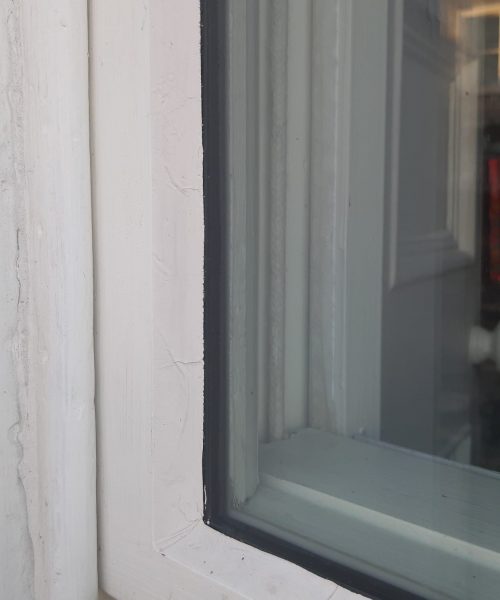Slimpane Double Glazing for Sash Windows

Standard double glazed units (DGU’s) consist of two panes of glass separated around the edge by a spacer bar (usually in a gold or silver finish). These spacer bars were typically 10mm wide and that space was filled with an inert gas called Argon. This meant that to get a good thermal performance, the units had to be at least 18mm wide (0.7 inches).
This breakthrough in spacer bar technology has major implications for double glazing period buildings. Now we can make DGUs only the thickness of a Biro and by using a dark coloured spacer bar, it virtually disappears and looks more like a glass shadow, rather than double glazing, even under close scrutiny.


It is worth mentioning at this point that, if a sash window has not been draught proofed, there would be very little benefit in double glazing it, as the heat loss from an unrefurbished sash window is mostly due to draughts (about 85%), while the single glass pane is only responsible for about 15% of the total heat loss (by conduction). This is a much slower process, when compared with a flow of cold air around the sashes into the room. This draught proofing and refurbishment work in protected structures does not require permission from the local Council. For more detail on sash window refurbishment, please refer to our website sashwindows.ie.
Limitations and constraints
Typical section of a slimpane glazing bar


Thermal Performance of Slimpane DGU’s
Thermal performance is measured in U-Values – the lower the value: the better the performance. Single glazing has a U-Value of about 5.4, while the regulation for double glazing requires it to be 1.9 or lower. The most obvious way of improving the U-Value of any DGU is to increase the volume of inert gas between the two panes, as you can see in this chart for Krypton gas:
The other way of improving the U-Value of a DGU is to apply a coating on the outward facing surface of the inner pane and this is referred to variously as “Low E” (emissivity) glass, “K GlassTM S”, or “soft coat glass”. This coating is now standard on most DGUs.
Acoustic Performance of Slimpane DGUs
- Increase the gas space, as much as possible.
- Use two different glass pane thicknesses to reduce the resonance between them.
- Use 6.4 laminated glass on one side of the DGU.
- Use a combination of all the methods above for maximum sound reduction.
Condensation
Apart from keeping heat in and noise out, double glazing has another major benefit i.e. it prevents condensation on the glass in cold weather. Condensation accumulates on single glazing in rooms where warm moist air hits the cold glass. It condenses on the glass, forming pools of water at the bottom of the pane(s). When DGU U-values are 1.9 or lower, condensation is normally prevented, when the moisture levels in the air are not extreme.
Please contact us at info@slimpane.ie if you have any other questions.

Photo by Ozgu Ozden – Unsplash.
